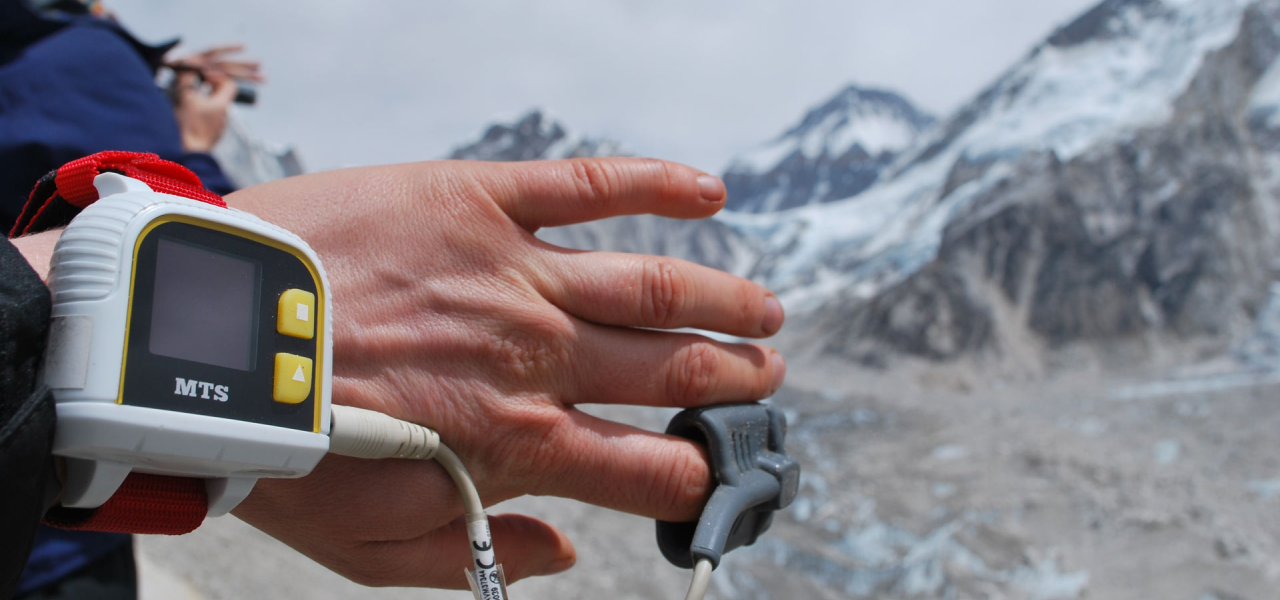
Why Every High-Altitude Trekker Needs a Pulse Oximeter
High-Altitude Trekker Needs a Pulse Oximeter
Because the most dangerous symptoms are the ones you don’t feel… until it’s too late.
The Silent Risk Above 10,000 ft
There’s something majestic about standing above the clouds — where snow blankets the earth and silence speaks louder than words. But as every experienced trekker knows, high altitude isn’t just beautiful — it’s unpredictable, unforgiving, and often, invisible in its danger.
Oxygen levels drop, and your body starts a silent war within. That’s when your best ally isn’t your trekking pole or backpack — it’s a tiny device called a pulse oximeter.
This blog isn’t about gadgets. It’s about survival — and why pulse oximeter for trekking is as important as your boots in the Himalayas.
What is a Pulse Oximeter?
A pulse oximeter is a small, lightweight device that clips onto your finger and instantly reads your blood oxygen saturation (SpO2) and heart rate.
- A healthy oxygen level: 95% – 100%
- Mild concern: 90% – 94%
- Red zone (AMS/HAPE/HACE risk): Below 85%
At sea level, this may not matter much. But above 10,000 ft, it’s your early-warning system when your body starts struggling with the lack of oxygen — even before symptoms appear.
Why It Matters in the Himalayas
Let’s be real — the mountains don’t give warnings in bold letters. Altitude Sickness (AMS), High Altitude Pulmonary Edema (HAPE), and Cerebral Edema (HACE) can hit without notice. You may feel “a little tired” or “slightly dizzy” — but internally, your oxygen could be dangerously low.
That’s where a pulse oximeter becomes your lifeline:
- It warns you before your body gives up.
- It tells your trek leader you need to descend — not guess.
- It helps identify trekkers at risk — even if they’re silent about symptoms.
- In groups, it saves lives. On solo treks, it could save yours.
Real Story: A Life Saved at Bhrigu Lake
During a high-altitude trek to Bhrigu Lake (14,000+ ft), a fit and confident trekker showed no visible symptoms. But a routine SpO2 check read 72% — a dangerously low level.
He didn’t even feel unwell.
Immediate descent was advised. Within hours, he developed shortness of breath and severe headache — clear signs of AMS. But thanks to the early reading, a life-threatening crisis was avoided.
That’s what a pulse oximeter does: it catches what you can’t feel.

How to Use It Correctly on Treks
- Check your SpO2 twice daily — morning and night.
- Sit still and rest for 5 minutes before checking.
- Avoid cold fingers — warm them slightly for accurate readings.
- Log your daily SpO2 to track any downward trend.
- Always check during symptoms — even minor ones like fatigue or headache.
Why It’s a Must-Have in Your Trekking Gear
Pulse oximeters are:
- Compact & lightweight (fits in your pocket)
- Affordable (₹500–₹1500 range)
- Battery-powered (long-lasting)
- Easy to use — no training needed
Yet despite this, many trekkers don’t carry them. That’s a mistake — because your SpO2 can drop before you even know what’s happening.
Bonus: It Helps Your Entire Group
It’s not just for you. Your trekking safety equipment like a pulse oximeter can:
- Help the trek leader assess team safety
- Identify who needs acclimatization breaks
- Avoid forced evacuations by catching problems early
- Save evacuation costs and prevent panic situations
Final Thoughts: When the Air Gets Thin, Data Matters
You may carry fancy boots, an expensive jacket, and all the energy bars in the world — but if your oxygen drops silently, none of that matters.
The pulse oximeter is not a luxury — it’s a survival essential. Especially on treks like Hampta Pass, Kedarkantha, Sar Pass, and Bali Pass, where altitude gains are steep and quick.
This is why trekkers need pulse oximeter on high-altitude expeditions. It doesn’t just give you numbers — it gives you a second chance.
